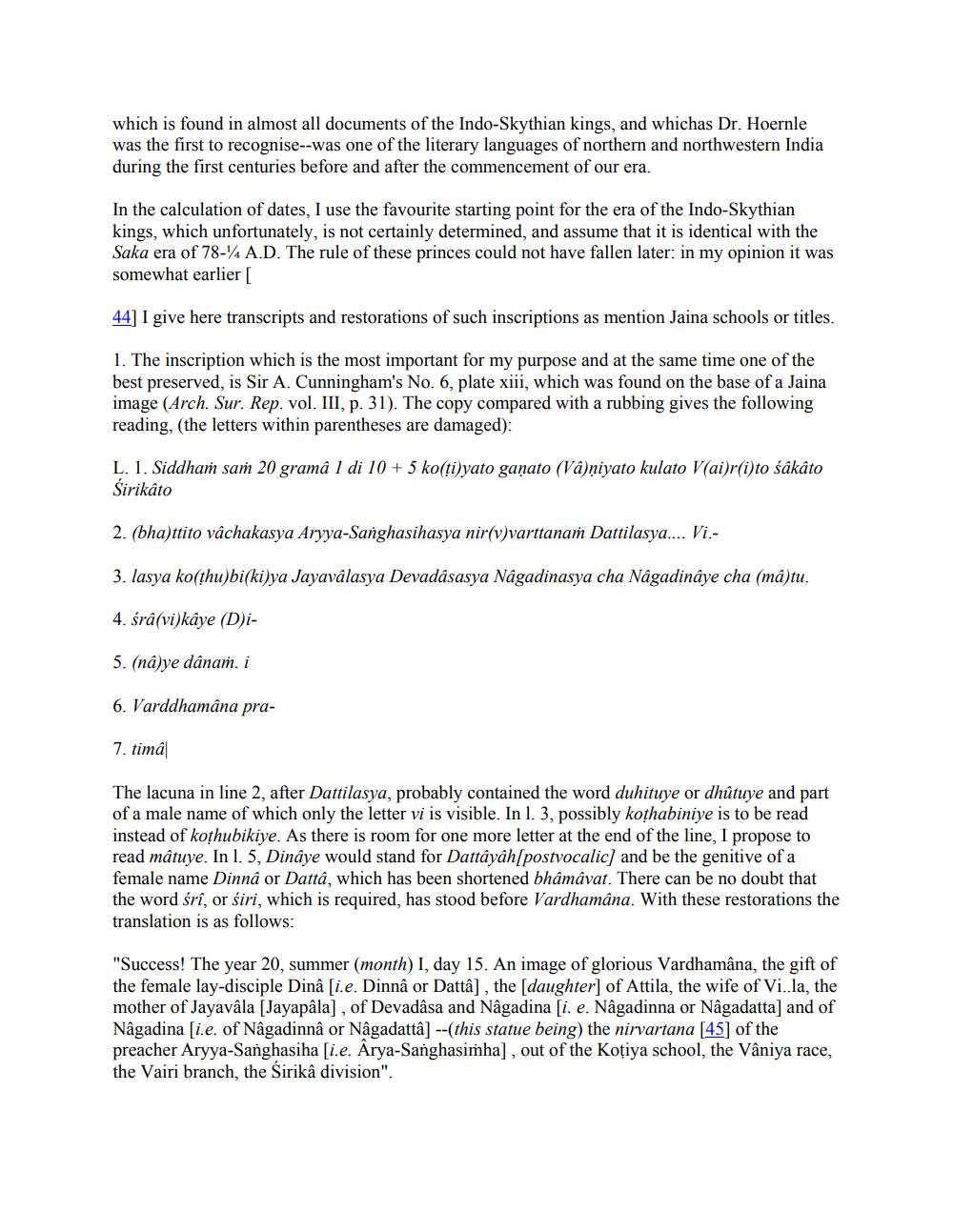________________
which is found in almost all documents of the Indo-Skythian kings, and whichas Dr. Hoernle was the first to recognise--was one of the literary languages of northern and northwestern India during the first centuries before and after the commencement of our era.
In the calculation of dates, I use the favourite starting point for the era of the Indo-Skythian kings, which unfortunately, is not certainly determined, and assume that it is identical with the Saka era of 78-14 A.D. The rule of these princes could not have fallen later: in my opinion it was somewhat earlier
44] I give here transcripts and restorations of such inscriptions as mention Jaina schools or titles.
1. The inscription which is the most important for my purpose and at the same time one of the best preserved, is Sir A. Cunningham's No. 6, plate xiii, which was found on the base of a Jaina image (Arch. Sur. Rep. vol. III, p. 31). The copy compared with a rubbing gives the following reading, (the letters within parentheses are damaged):
L. 1. Siddham sam 20 grama 1 di 10 + 5 ko(ți)yato gaṇato (Vâ)niyato kulato V(ai)r(i)to sâkâto Sirikâto
2. (bha)ttito váchakasya Aryya-Sanghasihasya nir(v)varttanam Dattilasya.... Vi.
3. lasya ko(thu)biski)ya Jayaválasya Devadāsasya Nagadinasya cha Nâgadinâye cha (mâ)tu.
4. śrâ(vi)kâye (Di
5. (na)ye dânam. i
6. Varddhamâna pra
7. tima
The lacuna in line 2, after Dattilasya, probably contained the word duhituye or dhûtuye and part of a male name of which only the letter vi is visible. In 1. 3, possibly koshabiniye is to be read instead of kothubikiye. As there is room for one more letter at the end of the line, I propose to read matuye. In 1. 5, Dinâye would stand for Dattâyâh[postvocalic) and be the genitive of a female name Dinnâ or Datta, which has been shortened bhâmâvat. There can be no doubt that the word śrí, or siri, which is required, has stood before Vardhamana. With these restorations the translation is as follows:
"Success! The year 20, summer (month) I, day 15. An image of glorious Vardhamâna, the gift of the female lay-disciple Dinâ [i.e. Dinnâ or Dattâ] , the [daughter of Attila, the wife of Vi..la, the mother of Jayavâla [Jayapâla), of Devadâsa and Nagadina si. e. Nâgadinna or Nagadatta] and of Nagadina si.e. of Nâgadinnâ or Nagadattâ] --(this statue being) the nirvartana [45] of the preacher Aryya-Sanghasiha [i.e. Arya-Sanghasimha], out of the Kotiya school, the Vâniya race, the Vairi branch, the Sirika division".




